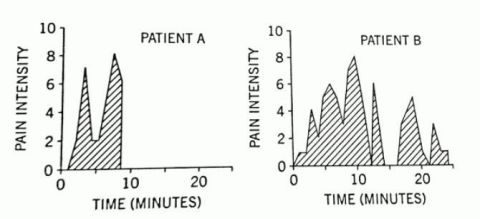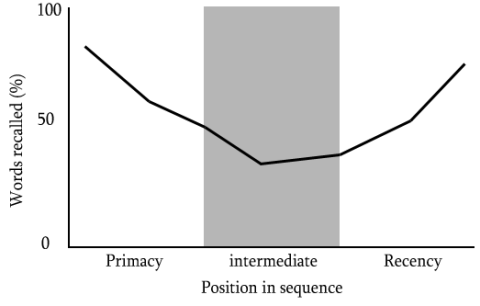Want your customers to keep coming back? You need to know about the peak-end rule.
You might not have heard of the peak-end rule before, but it’s something every tattoo artist like you should know about if you want to give your customers a better tattoo experience.
The human mind is a tricky thing, and doesn’t always behave how you think it should.
Our helpful friends at Wikipedia describe the peak-end rule like this
The peak–end rule is a psychological heuristic in which people judge an experience largely based on how they felt at its peak (i.e., its most intense point) and at its end, rather than based on the total sum or average of every moment of the experience. The effect occurs regardless of whether the experience is pleasant or unpleasant.
In layman’s terms, we judge an experience based on both the peak of the experience (i.e. the most painful point) and how things felt at the end, rather than thinking about the entire experience as a whole.
For example, you might go see a band and have a great time throughout their entire show, but a negative experience as you leave the venue will leave you with a negative memory of the event as a whole.
The History of the Peak-end Rule
The peak-end rule was first discovered in a 1993 study called When More Pain Is Preferred to Less: Adding a Better End. The study’s authors, Daniel Kahneman, Barbara L. Fredrickson, Charles A. Schreiber and Donald A. Redelmeier asked research subjects to carry out the following three tasks:
- Task 1: Hold their hand in a tub of cold (14.1°C) water for 60 seconds
- Task 2: Hold their hand in a tub of cold (14.1°C) water for 60 seconds, followed by holding their hand in the tub for 30 more seconds while the water heats to 15°C
- Task 3: Choose which of the previous two tasks to repeat
Shockingly, the study found that research subjects preferred holding their hand for a longer period in a tub of cold water when the water was gradually warmed up as opposed to holding their hand in equally cold water for a shorter duration.
Kahneman et al. Concluded that
“subjects chose the long trial simply because they liked the memory of it better than the alternative (or disliked it less), not because they were willing to suffer for the sake of obtaining a more favorable memory”.
You read that right, people chose the experience that made them feel pain for a longer period of time, instead of the shorter experience.
Further Research
In another study from 1996 by Kahneman and Redelmeier, patients undergoing a painful colonoscopy or lithotripsy procedure without anaesthetic found that they preferred the longer procedure that tapered off, even when that mean they experience more pain for a longer duration overall.
In fact, no correlation was found between the duration of the procedure and the retrospective analysis by patients. This held true even when pain was endured for periods longer than an hour.

The graph above shows the intensity of pain recorded each minute by two patients undergoing a colonoscopy. The procedure lasted 8 minutes for Patient A and 24 minutes for Patient B.
The peak-end rule tells us that Patient B would remember the longer procedure more positively than Patient A as, although their procedure was 3 times as long as Patient A’s, there was significantly less pain experienced towards the end.
A third study by Kahneman and Redelmeier in 2003 also following patients undergoing a painful colonoscopy found that the trial group who underwent a modified procedure which was longer but with less pain at the end of the procedure not only rated the experience as less unpleasant but also saw an 18% relative increase in the odds of returning for a repeat procedure.
The study concluded that
In agreement with theory, adding a short interval of minimal discomfort to the final moments of the procedure caused patients to retain a more favorable (less aversive) overall memory of the experience. The intervention caused about a 10% relative decrease in the overall memory of pain, a 10% relative increase in the number of patients who returned for follow-up
What’s Going On?
There are a couple underlying biases running that result in the peak-end rule. These are known as the Memory bias and the Recency bias.
Memory bias
Memories are stronger for events that are intensely emotional vs events that are less intensely emotional. That means people remembering those events are better able to remember them. This explains why the peak pain experienced will always be memorable, you never forget how much getting your ribs tattooed sucked.
Recency bias
It has been shown that people better remember the beginning and the end of events, these are known as the primacy bias and the recency bias and collectively known as the serial-position effect.

The serial position effect.
This demonstrates how people will have a more pleasant memory of an event if it begins and ends pleasantly, even if the intermediate stage was unpleasant.
Ethical Considerations
There are obvious ethical considerations to be made when thinking about the peak-end rule and tattooing.
For example, you wouldn’t want to make your client feel pain for a longer period of time than is strictly necessary, particularly for a long session or one in an area that tends towards being more painful such as ribs or feet.
However, if you’re tattooing a larger piece that will require multiple sessions, you can change the way you work to minimise pain towards the beginning and end of the session to make use of recency bias. For example, leave a less painful area until last and be as gentle as possible when cleaning up and wrapping a new tattoo.
In either scenario, given the choice, it’s unlikely that your customer would choose to experience the increased duration of pain so try to balance their needs as much as possible.
Application to Tattooing
The peak-end rule has clear potential when it comes to tattooing. For example on large multi-session projects such as a full sleeve or back piece, if you can make the experience better for your customer they’re more likely to come back in the future to finish the tattoo.
A customer with a better memory of being tattooed by you is also more likely to come back to get more tattoos by you. They’re also more likely to recommend you to their friends and acquaintances and to post about you on social media. All of which is a great way of getting new customers.
Ultimately, by understanding the peak-end rule, you’ll be able to have happier customers and those customers will help you generate more business.
Sounds like a win/win to me!
Photo by Brett Sayles from Pexels